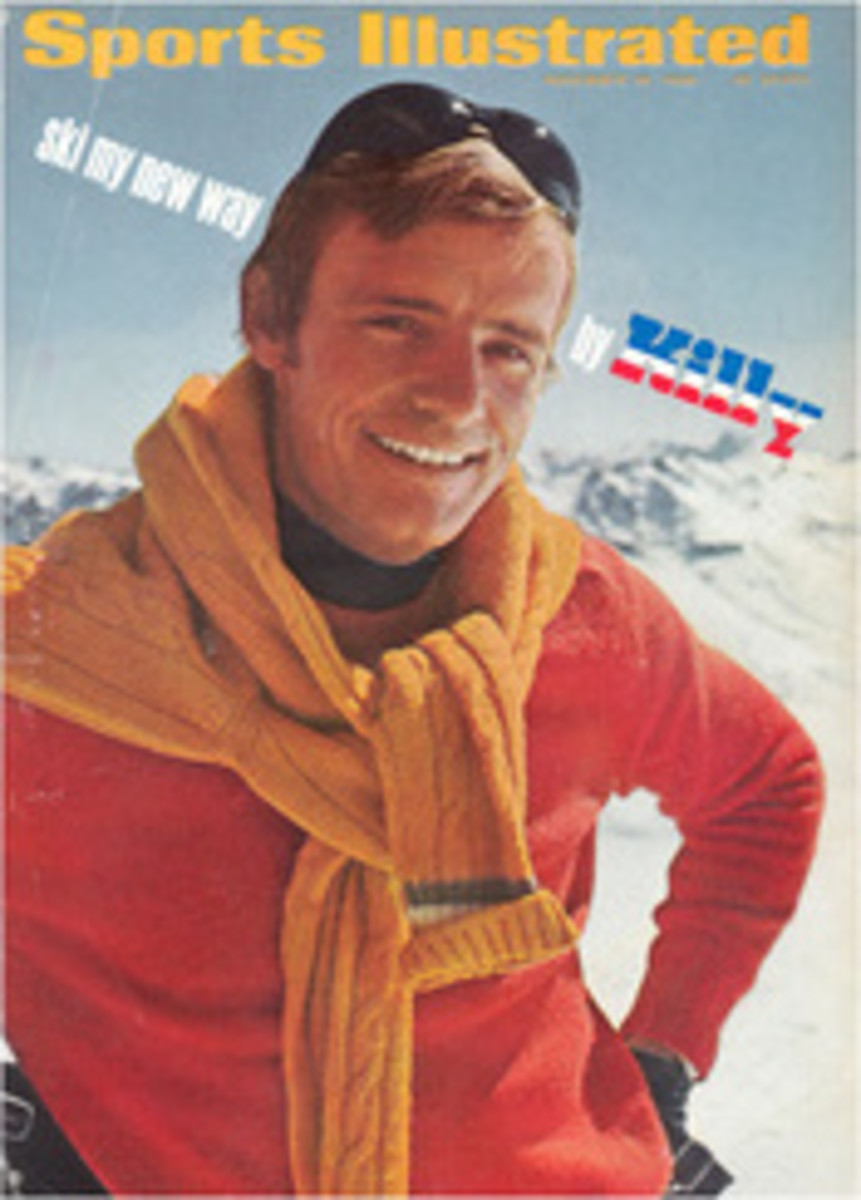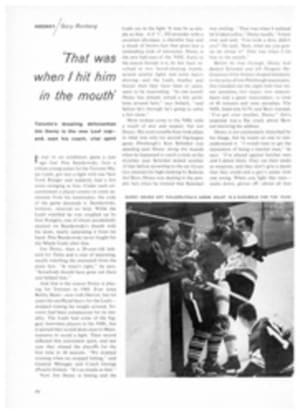
ALOHA TO A TROUBLED SEASON
While that old rascal, Lee Trevino, was winning the Hawaiian International Open Invitational golf tournament last weekend, Pacific II satellite was undergoing terrific punishment. Hovering somewhere over the equator, it had to bounce all that action, all that tropical scenery, all that ukulele music, as well as the world's longest golf title, from Honolulu to Brewster Flat, Wash. (from whence it rebounded to San Francisco and Los Angeles and points east). More than that, the overworked satellite had to relay the last flickering image of one of the decade's Sunday afternoon television staples, a show that had threatened to outlast even Ed Sullivan: to wit, the Professional Golfers' Association's weekly tour.
Now, alas, as it must to all TV shows, the last great Nielsen has come to the PGA tour we have learned to love. Hereafter, in the immutable formula of television, pretty much the same old show with the same characters will appear next year under another name—that of the American Professional Golfers. All during the Hawaiian Open you could sense the fading out of the old, the ringing in of the new. It was not just that the early leaders had names like Ken Ellsworth, Dick Lotz and Mac McLendon. Poor Gardner Dickinson, who has the overwhelming task of getting the new organization under way by early January, seemed to be interrupted last week in the middle of every backswing by a fresh dispatch from the mainland announcing some new threat from the PGA over the mass defection of the players.
As it expires, the PGA tour is anywhere from 35 to 45 years old, depending on whether you date its birth from those first haphazard winter tournaments with Walter Hagen, Mac Smith and Lighthorse Harry Cooper or the more formalized circuit of a few years later with Paul Runyan, Horton Smith and the Dutra brothers. Whatever its official age, the PGA tour went out in one of the zaniest, most controversial, form-defying years of its lifetime.
Consider what happened in the three major championships. The Masters in April almost had to go to the Supreme Court for a decision. Roberto DeVicenzo, who had tied winner Bob Goalby after a shamelessly dramatic final round, was disqualified for signing a faulty scorecard. Then came June and the U.S. Open, where a guy from some sand-swept course in West Texas out-talked and outplayed all the golfing millionaires with private jets. In just four days at Rochester, Lee Trevino, with a two-bit hustler's swing and his belly hanging over his belt buckle, moved the game of golf from the country club grill room to the hamburger drive-in, wisecracks and all. Finally, there was the PGA, played in the midsummer furnace of central Texas. While Texans were withering into prunes under their Stetsons, an oldtimer named Julius Boros just ambled along to victory when he should have been rocking away on some veranda sipping Geritol on the rocks. It was that kind of year.
There were, of course, 42 other tournaments along the way (counting next month's Cajun Classic, which rings down the curtain on professional golf for 1968). Perhaps the most predictable aspect of the tour was that six of these events went to Billy Casper, the world's best tournament golfer at the moment. After 14 years on the tour the only sign of wear and tear on Casper is a smattering of gray at the temples. Like his idol, Boros, Casper has such a free-and-easy swing it looks as if it should last him through the remainder of the 20th century. This year it has won him better than $200,000, which is close to $50,000 more than Jack Nicklaus in second place. "I just feel good," Casper explains in his serene way. "I want to keep going on the way Boros does."
Except for Casper, who was a bit more greedy than the rest, the fashion this year was to win two tournaments, preferably back to back. George Knudson, the Canadian, set the style in Arizona during February when he won at Phoenix and Tucson. By May, Bob Lunn had done it at Memphis and Atlanta. Bob Lunn? For the benefit of those who have not been minding their TV sets, Bob Lunn is the new King Kong of golf, replacing semiretired George Bayer. The ground trembles a bit when he lumbers down the fairway, and, like most of the horde of earnest young men who are callously shoving the Souchaks and the Finsterwalds and the Rosburgs into country club jobs, he can hit the ball out of sight and putt like a pool shark.
Came August, and back-to-back victories went to someone we could all recognize—Jack Nicklaus. Jack had been there all the time, plodding along in second or third place and scaring the leaders half to death, but it was not until he reached the Western Open in Chicago that he was able to win, repeating the following week at the American Golf Classic in Akron. Later that month it was Bob Murphy's turn at Philadelphia and the Thunderbird Classic in New Jersey. Murphy had been the amateur champion back in 1965, so he was not exactly a stranger to the public, but a rookie pro winning two in a row was like a hippie heading up the junior chamber of commerce—possible, but highly unlikely, particularly for someone with an appetite that puts his Munsingwear under the most intense strain. Finally, in October, still another rookie named Bob—Bob Dickson, last year's amateur champion—broke into the winner's circle with a victory at the Haig.
A record number of golfers, 12 in all, earned more than $100,000 this year, including Frank Beard, who did it without winning a single tournament, and the man who supposedly had such a poor year, Arnold Palmer. In the welter of unfamiliar names that occupy the golf news these days, Palmer's appears so seldom that a few may think he has been in hiding in South America. Yet 1968 was not all that bad. True, he missed the cut at the Masters, and there is that agonizingly poignant memory of him teeing off with a couple of amateurs in the bottom-most pairing of the U.S. Open on the final day. But he also won two rich and widely separated tournaments—the Bob Hope in early February and the Kemper Open in September. There was also the excruciating moment when Arnold stood up to an eight-foot putt on the 72nd green that would have tied him with Boros for the PGA, the only major championship Palmer has never won. Sadly, like so many of Palmer's putts these days, it refused to drop. Nonetheless, he won better than $100,000 for the umpteenth time, leaving him in seventh place. And he has been the biggest celebrity in sport for so long he already ranks with the Standard Oil Company, the International Olympic Committee and the Imperial German Army as one of mankind's institutional landmarks. No one need worry about Palmer.
And so, as the sun set behind fabled old Diamond Head last Sunday afternoon, the time had come to say farewell to the good old PGA. The Hawaiians sped it on its way with traditional native ceremony, blessing everything in sight, including the golfers, the papaya and the okolehao. Everyone sang Aloha Oe, and there was scarcely a dry eye from Koko Head to Barbers Point. It was a touching moment all right, but there must be forgiveness for some of the golfers if their minds were elsewhere.
A few, like Dickinson, Jack Nicklaus and Frank Beard, must get the APG on its feet and moving by the end of the year. So far they have an administrative director, a tournament director, a TV man, a lawyer, a few dollars in the bank and a temporary office on Park Avenue in midtown Manhattan. They also have enough promises from sponsors to run a weekly tour well into the middle of 1969, a tour that will be hardly distinguishable in either players, money or locales from the year just past. However, and a very big however indeed, a vengeful and litigious-minded PGA is lurking in the background threatening to slap subpoenas on anyone who tees it up. As they left their island paradise last week, the professional golfers needed all the blessings they could get.
PHOTO
Bob Lunn, the tour's new King Kong, belts a big one against a typical Hawaiian background.
PHOTO
Bob Dickson enjoys far-from-trapped sand.

